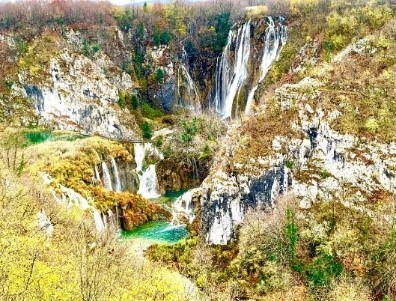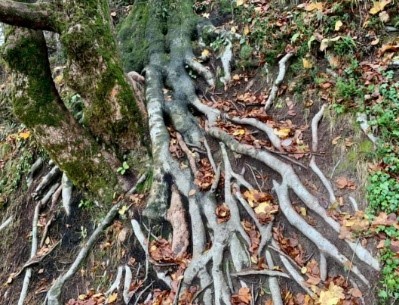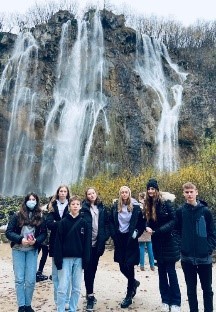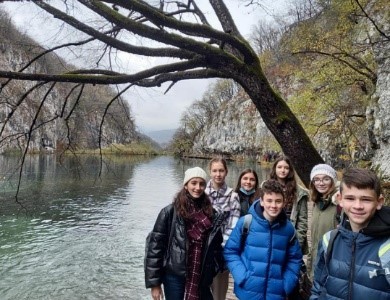School subject: GEOGRAPHY
Topic: Protected Natural Areas – Plitvica Lakes National Park
Author: Zdravko Petek, Novi Marof Primary School, Novi Marof, Croatia
Age of students: 6th grade (12 year-olds)
Task time: 10 full-day extracurricular classes
SHORT DESRIPTION:
The students were divided into 4 groups (5-6 students per group). Each group had to use a short description of the place via a QR code and the Google Maps application to find a given place within the Plitvice Lakes National Park, take a picture of that place and find what they consider important about the protected areas (e.g. the area where it is located, the specifics of the area that has a certain degree of protection, plant and animal life...)
LEARNING OBJECTIVES:
Students will be able to:
• distinguish the form of nature protection (national park) in Croatia
• orient yourself in space using Google Maps
• develop awareness and love of national heritage
• present your own opinion in an argumentative manner
• develop respect and appreciation of other people's opinions
• adhere to agreements, rules and work instructions
• develop responsibility towards oneself and others
• actively participate in the work
• draw conclusions independently
PROCEDURE:
After the theoretical knowledge learned in the classroom about the protected natural areas of Croatia, the students had practical lessons in nature. At the beginning, they have to study a short description of the place inside the Plitvice Lakes National Park from a QR code, which they then have to find with the help of Google Maps (texts and QR codes were prepared by the teacher). All groups have the same path of movement, they just have different places to find. When they get to the given place, they have to take a picture at that place and find and take a picture of the special features that are listed in the text under the QR code. After they return, each group must make a short PPT presentation of a maximum of 5-6 slides (according to the teacher's instructions). In the classroom, each student from each group presents one slide.
TOOLS AND EQUIPMENT:
• smartphone, internet, computer and video projector.
CONCLUSIONS:
• Students used modern technology in spatial orientation (QR code, Google Maps) and created PPT presentations to show the results of applying theoretical knowledge in nature.
• Students had the opportunity to apply the learned, theoretical knowledge, recognize and apply it outdoors in nature.
• Students cooperated in the realization of tasks, shared their responsibilities, worked in a team and developed communication skills, respected other people's opinions.
• The teacher created the lesson plan and gave and explained the tasks to the students and the ultimate goal of creating the assigned tasks.
PHOTOS:




